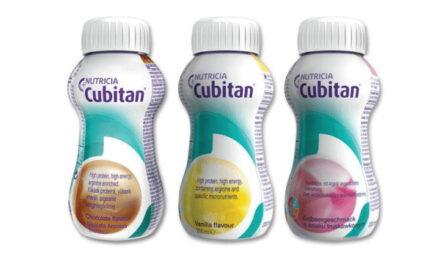Marmalade and diabetes, are the two compatible with each other or not? In other words, Is Marmalade Good For Diabetics? We are about to find answers to those questions in this article.
Marmalade is a regular household delicacy used with various other items such as toast.
It is important to understand the nutritional content of Marmalade spread to understand its benefits and side effects on one’s health.
In this article, we will discuss the health benefits of Marmalade and the effects it has on people with diabetes, whether they are positive or negative.
Let’s start by defining Marmalade…
What is Marmalade?
People often confuse Marmalade with jam.
Jam is a blend of different fruits with sugar, a sweet condiment used for breakfast and desserts.
On the other hand, Marmalade is a preserve that is made using citrus fruits like oranges. It often contains the peel, which provides a more chunky texture.
Marmalade has a sour and bitter taste.
It can be stored inside or outside the refrigerator. It is preferred to store in the refrigerator to ensure longevity.
History of Marmalade
The presence of Marmalade can be dated back to ancient times. Since then, it has been made with similar techniques.
Originally, Marmalade was said to be derived from quince, especially during the time of the Romans. It was not until the 17th century that the British started using citrus fruits like orange to make this delicious preserve.
How is Marmalade Made?
Typically, Marmalade is made using the rinds of orange, the fruit itself, along with some sugar and water.
The rinds are cooked first to ensure a softer texture, and fruit and sugar are added.
Sometimes pectin is added to ensure that the mixture sets properly in case the fruit content is not high.
Marmalade is also made using grapefruit, kumquat and lemon. However, orange marmalade is the most commonly used of the latter.
Types of Marmalade
There are different types of Marmalade that include the following:
1- Sweet Orange Marmalade
Sweet orange marmalade is made using Valencia or naval oranges. The process requires oranges, 2 tablespoons of lemon juice, granulated sugar, and water. This type of Marmalade is made from Valencia or Naval oranges. This is 30% fruit and 70% sweetening ingredients.
2- Bitter Orange Marmalade
Bitter orange Marmalade is made using Seville oranges which have a more sour consistency which contributes to the bitter taste and the name. This type of Marmalade is 25% fruit and 75% sweetening ingredients.
3- Bitter and Sweet Marmalade
This type of Marmalade is made using both sweet and bitter oranges. This also has the same percentage of fruit and sweetening ingredients as the sweet orange marmalade.
4- Kumquat Marmalade
5- Lemon Marmalade
6- Peach Marmalade
7- Ginger Marmalade
What’s in Marmalade?
Marmalade contains Vitamin C, which is important for healthy blood. Apart from this, Marmalade also has dietary fibre, Iron, and calcium.
All these nutrients are important for the body and play a key role.
It also contains powerful antioxidants that can help mitigate constipation.
- Vitamin A
Marmalade is rich in Vitamin A, which is essential for tissue repair and growth function in the body.
Vitamin A is necessary for the healing of wounds and fighting infections.
It is also considered a strong antioxidant.
- Dietary Fibre
The dietary fibre in Marmalade helps provide bowel movement that eliminates chances of constipation.
Studies also suggest Marmalade helps lower Cholesterol which leads to a healthy heart.
Furthermore, the consumption of dietary fibre can reduce the risks of colon cancer.
- Vitamin C
Vitamin C is also known for being an antioxidant that helps the body to combat various infections.
Vitamin C also helps maintain healthy teeth and skin.
- Calcium
Marmalade also provides calcium that helps maintain strong bones and teeth, maintain your blood pressure and aids in blood clotting, leading to a healthy heart.
- Iron
Red blood cells require a huge chunk of Iron to form haemoglobin in the body which helps deliver oxygen all over the body. Marmalade provides a decent amount of Iron to help with that.
Nutritional Facts of Marmalade
Below is a table containing the nutritional facts of Marmalade.
This is per 100g serving size.
|
Name |
Amount |
|
Energy |
250 kcal |
|
Protein |
0 g |
|
Total lipid (fat) |
0 g |
|
Carbohydrates, by the difference |
65 g |
|
Fiber, total dietary |
0.7 g |
|
Sugars, total including NLEA |
50 g |
|
Calcium, Ca |
26 mg |
|
Iron, Fe |
0.2 mg |
|
Sodium, Na |
50 mg |
|
Vitamin C, total ascorbic acid |
24 mg |
|
Vitamin A, IU |
0 IU |
|
Fatty acids, total saturated |
0 g |
|
Fatty acids, total trans |
0 g |
|
Cholesterol |
0 mg |
What Does Research Say About Marmalade And Diabetes?
So what does the research say about Marmalade and diabetes?
The first thing to notice is that Marmalade might be the healthier option for people with type 2 diabetes when put up against jam.
Jam is said to contain more sugar, whereas Marmalade has comparably less sugar content.
But the real question is; will ‘lesser sugar content in marmalade’ be good enough for people with type 2 diabetes?
A study by the Federal Research Centre of Nutrition, Biotechnology and Food Safety in Moscow shows that Marmalade can be suitable for people with type 2 diabetes if the sugar content is reduced.
This research study evaluated the difference in the acceptability of Marmalade between healthy people and people with type 2 diabetes. : The main goals of the study were to compare agar-, gelatin-, and pectin-based marmalade with maltitol, dried fruits, and berries for glycemic control.
Results showed that it is possible to use Marmalade for sugar control, and it will have no difference in the perception of both healthy people and patients with type 2 diabetes.
Health Benefits of Marmalade For Diabetics
1. It is Fiber-rich
Marmalade contains dietary fibre that can help people with diabetes by lowering cardiovascular diseases and also increasing glycemic control.
Fibre-rich food lowers the glycemic index, which prevents excessive fluctuation of blood glucose levels, keeping you full for a longer period.
It can help control blood pressure and lower metabolic control for diabetic patients.
2. It is high in Vitamin C
Vitamin C in Marmalade can play a major role for both people with diabetes and non-diabetics.
Studies have shown that Vitamin C helps lower the risks of developing diabetes for non-diabetics.
Vitamin C is available from a variety of sources. However, consuming it from a more natural source such as Marmalade can prevent side effects and avoid Vitamin C medication.
Some people treat diabetes with a combination of vitamin C and drugs such as metformin.
A study conducted found that diabetics who took oral vitamin C with metformin experienced decreased fasting and postprandial blood glucose levels and glycated hemoglobin.
3. It is rich in Iron
People with diabetes must regularly check their blood for signs of anemia. This is because diabetes can lead to kidney damage, a leading cause of anemia.
The Iron in Marmalade can help prevent anemia, especially for people with type 2 diabetes.
4. It is low in Cholesterol
People with diabetes tend to have a high portion of bad cholesterol that can stick to the walls of blood vessels and damage their walls more easily.
Marmalade is a healthier choice for people with diabetes because it can contain no cholesterol.
Furthermore, the citrus peel is said to contain certain antioxidants that can help reduce certain types of Cholesterol in the body.
Best Types of Marmalade for Diabetics
It is still up for debate which sugar-free Marmalade is the best suited for people with diabetes. It can be a challenge for diabetics to find the right Marmalade for themselves.
People with diabetes can consume bitter orange Marmalade, which has less sugar content than the other types of Marmalade. This would be best suited for occasions such as breakfast or a light snack.
Apart from this, diabetics can also stick to consuming lemon marmalade, which has a bitter taste and less sugar content.
Nevertheless, it would be more appropriate for type 2 diabetics to consume sugar-free Marmalade or make their own at home.
Tips on Selecting and Eating Marmalade for Diabetics
There are many ways to consume Marmalade.
One of many is the combination of Marmalade with toast. This is a delicacy enjoyed by many.
But is it the right one for diabetics? Truthfully, it depends on what type of Marmalade you choose and also on the type of bread.
The American Diabetes Association says that no doubt starchy foods are a significant part of your meal plan. Nonetheless, it is necessary for you to consider your options when you have diabetes.
Organic whole grain bread would be best suited for people with type 2 diabetes when needed to consume with Marmalade. This will provide not only a low starch content but also fibres.
It is advised for diabetics to avoid white bread because it raises the blood sugar level slowly.
Other than this, Marmalade can also be topped on some biscuits or cakes. Keep in mind to keep the consumption lower than usual because the biscuits or cake sponge can contain nutrients such as carbohydrates that will raise the glucose level in your blood.
Last but not least, Marmalade can also be put on meat items to add an eccentric flavor.
People with type 2 diabetes should keep in mind to include lean meats in their diet when using Marmalade. Also, you should dodge meats that are high in saturated or trans-fat to reduce the risks of heart disease.
When Should Diabetics Not Eat Marmalade?
Even though diabetics can consume sugar-free Marmalade if their diet is maintained, there are still some cases where people with type 2 diabetes should avoid consuming Marmalade.
- Firstly, when your blood sugar is high, it is recommended that you do not eat Marmalade.
Marmalade may contain less sugar than jam, or perhaps if you take sugar-free Marmalade, you would consider the risks minimal. But natural sweeteners may be added to Marmalade that can affect your blood sugar level. So, avoid it when you can!
- Secondly, if the person with diabetes is not following a low-carb diet, then it is advised not to add Marmalade to the already unhealthy diet.
The high carbohydrate content will raise the glucose level in the blood. Adding Marmalade to these high-level carbohydrates will only act as adding fuel to the fire. However, if the person with diabetes is using insulin on a regular basis, then the effect might vary, and the consumption of Marmalade need not be prohibited.
Conclusion
Marmalades are rich in nutrients that have numerous health benefits.
People with type 2 diabetes may include Marmalade in their diet to benefit from these various nutrients such as Vitamin A, Iron and fibres.
However, it would not be accurate to say that Marmalade would be a great addition to the diet of diabetics.
With every great thing, there comes a weakness. Marmalade may be made with tons of sugar and can prove quite deadly if taken in large amounts.
In the case of sugar-free Marmalade, yes, it is a great substitute for many other condiments, but it greatly depends on the items that are consumed with it since Marmalade is a delicacy that is not enjoyed alone.
In the end, Marmalade is a great pleasure item that should be a part of everyone’s diet and can be taken on a regular basis.
The best way for any people with diabetes out there to enjoy this citrus fruit preserve would be to avoid processed Marmalade and learn to make Marmalade at home without adding any artificial sweeteners or sugar.
As always, you should talk to your diabetes management team before considering Marmalades in your diabetes diet.














